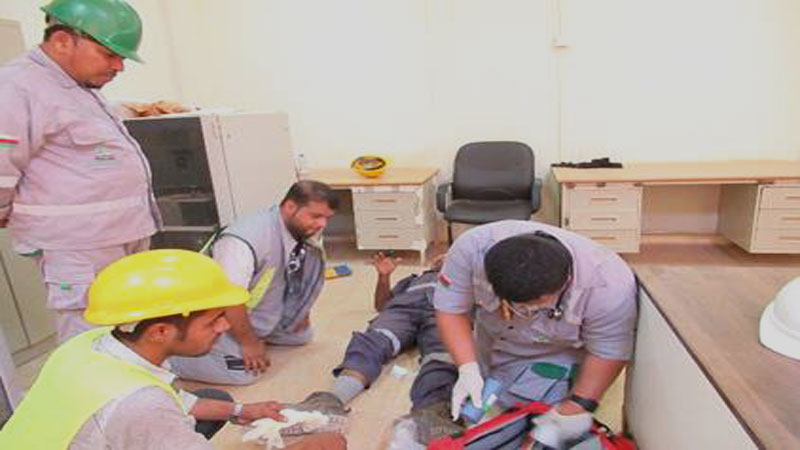

Salalah: Heat susceptibility is an issue every employee and employer should take note of with the rising temperatures. It is time for the employers to review their policy for the outdoor employees, while it is pertinent for the employees to take note of some tips on how to beat the heat and stay healthy while working in heat conditions.
In an interview with Observer, Frank Higgins, Head of health, safety and environment (HSE) at Raysut Cement, gave an insight into the condition of working during extreme summer and called for awareness of the effects of heat on our body as the temperatures rise.
A safety expert, Higgins cited some common effects of working in heat and said, “Working in heat can be hazardous and can cause harm to workers. The human body needs to maintain a body temperature of approximately 37 degrees Celsius. If the body has to work too hard to keep cool or starts to overheat a worker begins to suffer from heat-related illness.”
There is a general term to describe a range of progressive heat related conditions including fainting, heat rash, heat cramps, heat exhaustion, and heat stroke.
In heat rash skin becomes irritated and causes discomfort when working in heat, heat cramps or muscle cramps happen due to heavy sweating without replacing salt and electrolytes, fainting can occur when a worker stands or rises from a sitting position and dehydration happens due to increased sweating and if workers are not drinking enough water.
Heat exhaustion happen when the body has to work too hard to stay cool and heat stroke when the body can no longer cool itself. This can be fatal.
Higgins suggested proper measures for outdoor workers during summer as there are chances when the workers have tendency to reduced concentration. “When working in heat it is more difficult to concentrate and a worker may become confused. This means the worker may be more likely to make mistakes, such as forgetting to take simple precautions.”
Asked for possible tips to manage the risk, Higgins suggested briefing employees on dangers of working in heat, ensuring that employees are well hydrated. For this, along with regular supply of water, there should be planned work breaks to ensure the employees go to shaded areas. He also suggested rotation of heavy work and undertaking of risk assessment including effects of heat during job.
He called for all the necessary steps for the safety of the outdoor workers and exhorted the immediate managers and supervisors to keep monitoring the situation on regular basis.
Higgins suggested some simple tips to the outdoor workers like, staying out of the sun, wearing loose clothing, covering head and using sun screen.
He asked the workers to maintain proper hydration and look at the urine colour chart to understand their own hydration level. “Drink small amounts of water frequently, when resting stay in shade, don’t drink caffeine drinks and immediately inform your manager or supervisor if you feel unwell,” he suggested.
To avoid any emergency, Higgins called for risk assessment and called upon the managers and supervisors to must review their risk assessments and where required modify the risk assessment incorporating the additional risks from working in heat.
He called to consider place of work (outdoors, next to heat sources etc), duration of work, location of work (work at height, confined space, lone working) etc, while doing risk assessment.
Oman Observer is now on the WhatsApp channel. Click here



